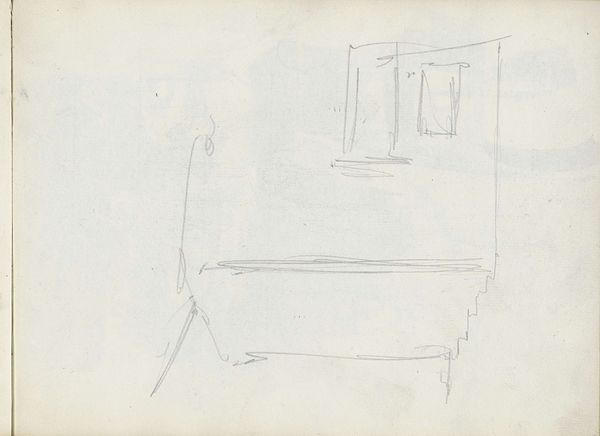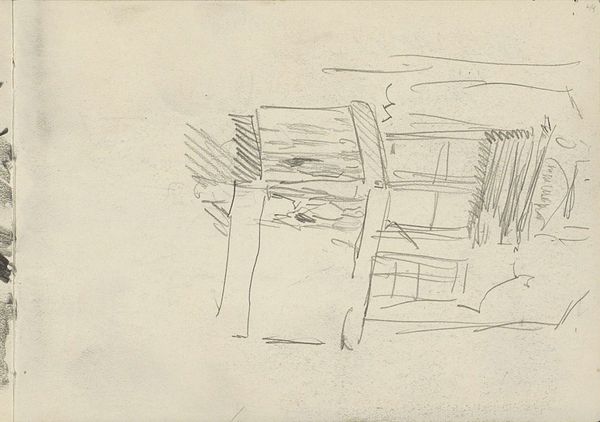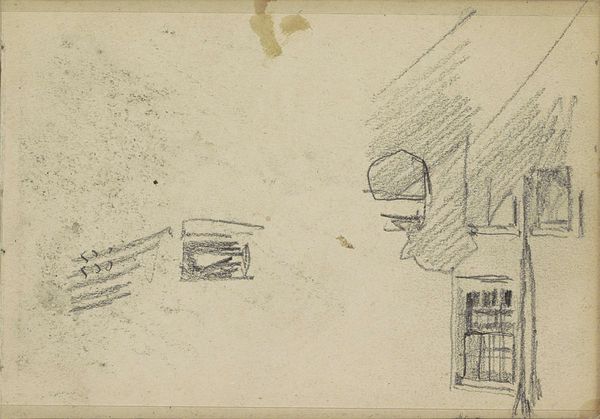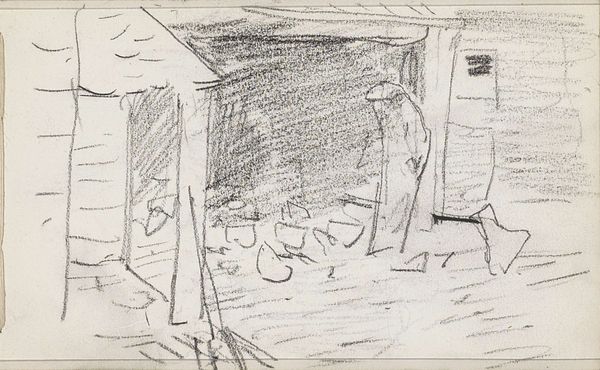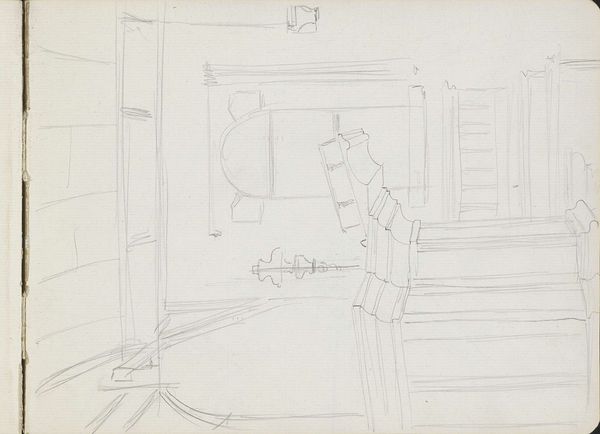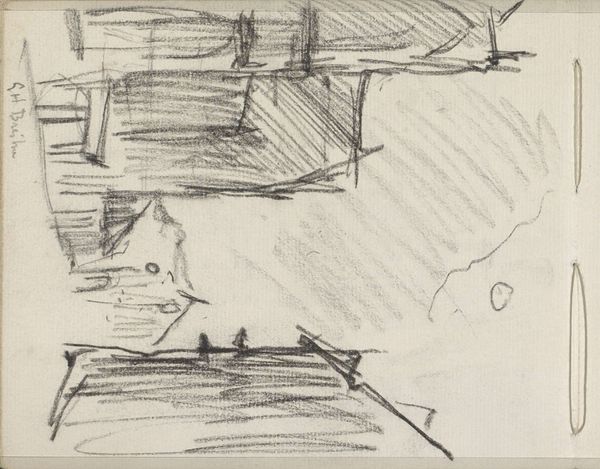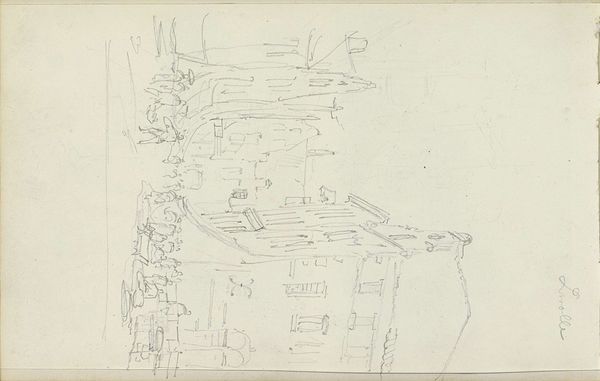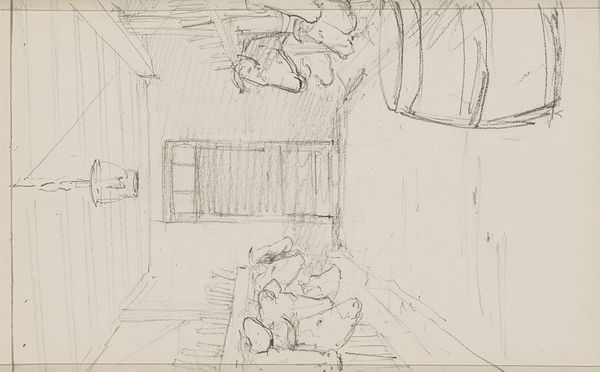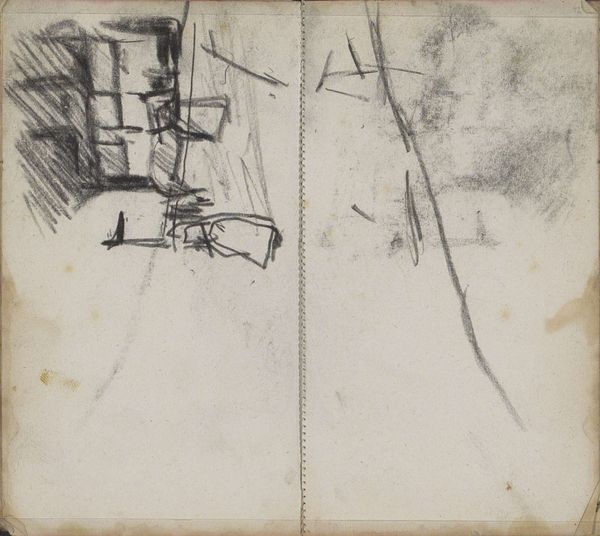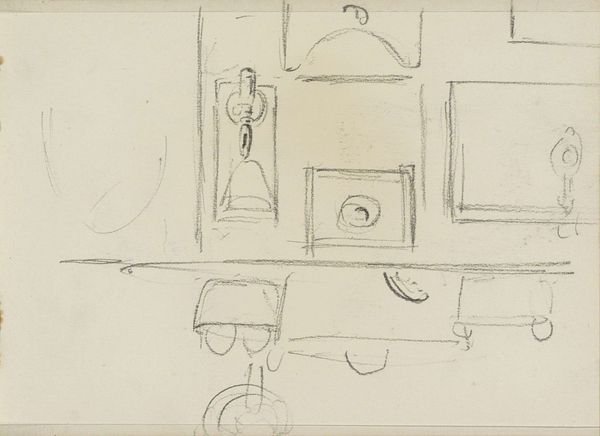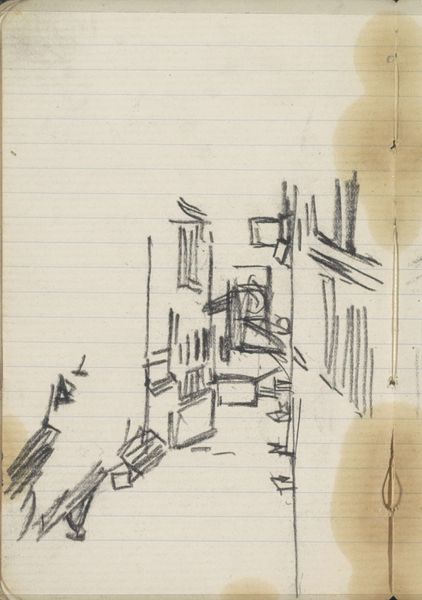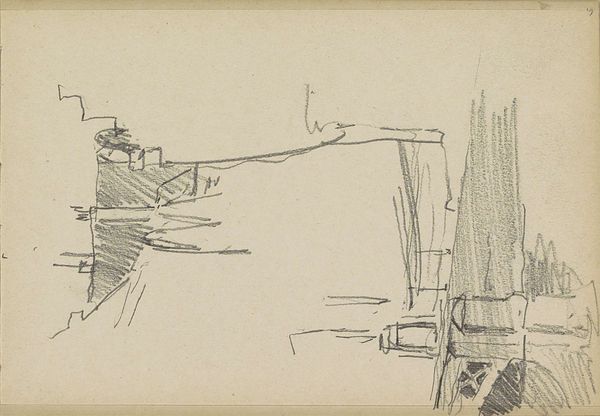
drawing, pencil
#
architectural sketch
#
drawing
#
aged paper
#
sketch book
#
incomplete sketchy
#
hand drawn type
#
landscape
#
form
#
personal sketchbook
#
idea generation sketch
#
sketch
#
pencil
#
line
#
sketchbook drawing
#
academic-art
#
sketchbook art
#
realism
#
initial sketch
Copyright: Rijks Museum: Open Domain
Curator: Willem Koekkoek’s "Huis," created sometime between 1849 and 1895, captures a modest building in spare pencil strokes on aged paper. What strikes you first about this sketch? Editor: There's a sense of fragility and transience. The incompleteness emphasizes the preliminary nature. I find that rather moving, given that architectural drawings like this are often meant for grandiose projects of civic transformation, not intimate moments of conception. Curator: It is intriguing, isn't it? Koekkoek’s realism is here stripped to its barest essentials, almost an anti-monument, foregrounding its form. We're offered a glimpse into the labor of visualizing a structure before it takes on concrete form. Think about the material history embedded within that sketch book – where was it made, by whom, what were the social conditions that allowed an artist to produce this at all? Editor: True. But what I appreciate is Koekkoek's management of line and space. He defines shape using primarily contour lines to suggest depth. The windows are hinted at more than defined; this makes the whole composition dreamlike rather than literal. The aged quality of the paper acts almost as a tonal counterpoint, the emptiness of the composition creating an aesthetic experience where form transcends the everyday. Curator: Consider that sketchbook. It could be bound by hand in the artist’s studio, using locally-sourced paper and pigments, or maybe not! Regardless, understanding how “Huis” came to exist, the tools available to Koekkoek, provides us a very particular historical lens. Editor: Well, I find the most compelling story is in its asymmetry, which makes a solid architectural analysis feel somehow too rigid. Its beauty really is in the initial formal proposition; an architect putting ideas to paper. The sketchbook style gives us a certain insight here; “Huis” does not present a completed picture but something in its inception, like it's always becoming and never being. Curator: Precisely! It shows the tangible steps of the creative process. Editor: An intriguing demonstration on artistic and artisanal production for sure. Thanks for revealing your ideas of labor so deftly. Curator: And thank you for illustrating the beauty in this quiet but revealing piece.
Comments
No comments
Be the first to comment and join the conversation on the ultimate creative platform.
